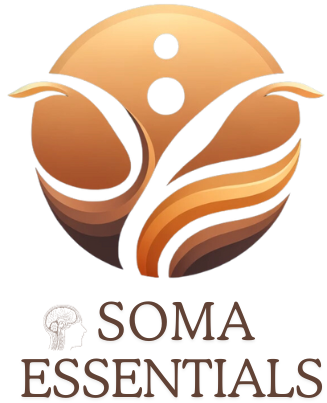What Are Some Practical Ways To Integrate Mind-body Practices Into Daily Life For Maximum Benefits?
In this article, “What Are Some Practical Ways To Integrate Mind-Body practices Into Daily Life For Maximum Benefits?”, you’ll gain insights on effectively incorporating mind-body wellness practices into your everyday routine. This exploration provides a comprehensive guide filled with practical strategies for your personal health journey. It highlights how simple modifications in your lifestyle can have profound impacts on your mental, physical, and emotional wellbeing. The emphasis is on accessible and realistic methods to elevate your holistic health, creating harmony between your mind and body.

Understanding Mind-Body Practices
This article was written to help you understand Mind-Body practices, a group of techniques aimed at enhancing the mind’s positive impact on the body. These practices introduce you to a range of tools and approaches designed to promote health, engage mind-body awareness, and effectively address a variety of health conditions.
Definition of Mind-Body Practices
Mind-Body practices refer to a wide range of therapies and techniques designed to improve mental and physical health and wellness. These interventions focus on the interactions among the brain, mind, body, and behavior, aiming to use the mind to affect physical functions and promote health. Such practices include meditation, yoga, tai chi, and biofeedback, among others.
The Science Behind Mind-Body Practices
The foundation of mind-body practices aligns with neuroscience and psychoneuroimmunology fields. Research insinuates the brain’s significant influence on behaviors, immune function, and health. When subjected to stress or negative emotions, physiological changes in the body may lead to health issues. Conversely, stress management and positive mental states can improve health outcomes.
Health Benefits of Mind-Body Practices
Mind-body practices offer a plethora of health benefits. They can improve mental health by reducing anxiety and depression, enhance sleep quality, increase focus, boost mood, and promote overall wellbeing. Physically, these practices can help manage pain, reduce heart disease risk, lower blood pressure, and improve gastrointestinal health among other benefits.
Meditation for Mind-Body Wellness
Meditation, a mind-body practice with ancient roots in spiritual traditions, involves focusing attention to enhance relaxation, increase calmness, and promote overall wellness.
What is Meditation
Meditation is a practice where you use a technique – such as mindfulness, or focusing the mind on a particular object, thought, or activity – to train attention and awareness, and achieve a mentally clear and emotionally calm and stable state.
Different Types of Meditation Techniques
Various meditation techniques exist, including mindfulness meditation, transcendental meditation, loving-kindness meditation, visualization meditation, but they all strive for a clear and relaxed mind. Your choice in meditation technique may depend on your health goals, available time, and personal preferences.
How to Incorporate Meditation into Daily Routine
Incorporating meditation into your daily routine can be straightforward. You may begin your day with a brief meditation session or use a few minutes of your lunch break for a mindfulness exercise. Alternatively, you may choose to meditate before bedtime, promoting restful sleep.
The Benefits of Regular Meditation
Regular meditation cultivates a sense of calm and focus that can enhance your mood, reduce stress, improve sleep, and promote cognitive functions such as attention and memory. It has also been associated with decreased symptoms in conditions like depression, anxiety, chronic pain, and more.
Yoga for a Strong Mind And Body
Yoga is a mind-body practice that unites physical poses, controlled breathing, and meditation or relaxation. It may help reduce stress, lower blood pressure, and lower heart rate.
Understanding Yoga and Its Origin
Yoga, a practice stemming from ancient India, is designed to promote harmony between the mind, body, and spirit. It uses a blend of physical poses, controlled breathing, and meditation or relaxation.
Yoga Poses for Beginners
Beginners to Yoga can start with simple poses such as Mountain Pose (Tadasana), Child’s Pose (Balasana), or Savasana (Corpse Pose). As you get more comfortable, you can gradually introduce more complex poses into your practice.
Benefits of Regular Yoga Practice
Regular yoga practice can help improve flexibility and balance, enhance strength and endurance, and promote a more focused and peaceful state of mind. Moreover, it can offer relief for various mental health issues, including stress, anxiety, and depression.
Incorporating Yoga Into your Daily Schedule
Incorporating yoga into your daily routine can be as simple as setting aside a few minutes each day for some basic poses and stretching. There are numerous online tutorials and apps available to help you get started.

Mindful Eating for Mental and Physical Health
Mindful eating is a practice that involves paying full attention to the process of eating, noticing all the tastes, smells, thoughts, and feelings associated with taking a meal.
Definition of Mindful Eating
Mindful eating involves paying full attention to the experience of eating and drinking, both inside and outside the body. It involves noticing the colors, smells, flavors, and textures of your food; chewing slowly; getting rid of distractions while eating; and listening to physical hunger cues and eating only until you’re full.
How to Practice Mindful Eating
Mindful eating can be practiced by eating slowly, fully savoring each bite, and paying attention to your body’s hunger and satiety cues. It also involves eating in response to physical hunger signals instead of emotional cues.
Health Benefits of Mindful Eating
Mindful eating can result in better digestion and absorption, improved satisfaction with meals, decreased binge eating, and a healthier relationship with food. It may also help in weight loss and maintaining healthy weight, as you become more in tune with what and how much your body needs.
Implementing Mindful Eating in Everyday Meals
To implement mindful eating, try to eat meals at a designated place rather than in front of the TV or computer. Spend a few moments fully observing your meal before you begin eating, savor the aroma, then chew slowly, fully experiencing the meal in every bite.
Tai Chi for Balancing Mind and Body
Tai Chi, an ancient Chinese tradition that, today, is practiced as a graceful form of exercise. It involves a series of movements performed in a slow, focused manner and accompanied by deep breathing.
Understanding Tai Chi and Its History
Tai Chi originates from China where it was developed for self-defense in ancient times. Today, it is practiced globally for its health benefits, which include stress reduction and the enhancement of physical balance and flexibility.
Step-by-step Guide to Basic Tai Chi Moves
Beginning Tai Chi involves mastering basic moves such as ‘wave hands like clouds’, ‘grasp the sparrow’s tail’, and ‘repulse the monkey’. Following a Tai Chi expert or using a video tutorial, ensures you perform the moves correctly.
Health Benefits of Tai Chi
Tai Chi provides various health benefits such as stress reduction, improved balance and flexibility, increased strength, reduced pain, and improved sleep. Additionally, it can enhance cardiovascular fitness and boost mood, focus, and immune function.
How to Fit Tai Chi into Your Daily Routine
Adding Tai Chi to your daily routine requires a peaceful space at home or a nearby park. Dedicate a designated time of the day to perform these moves without interruption. With practice, Tai Chi can become an enjoyable and beneficial part of your daily life.
Using Breathing Exercises for Stress Management
Breathing exercises are a simple yet powerful relaxation technique that can help you remain calm and focused in any situation.
Science behind Breathing Exercises
Breathing exercises work on the fundamental premise that deep, deliberate breathing can affect the autonomous nervous system’s responses, leading to reduced stress, lowered blood pressure, and enhanced mental clarity.
Different Types of Breathing Techniques
Breathing techniques such as belly breathing, slow breathing, and paced breathing can help trigger a relaxation response, reducing stress, and fostering a sense of calm and well-being.
How to Integrate Breathing Exercises into your Day
Integrating these exercises into your daily life can be done by setting aside a few minutes each day to take slow, deliberate breaths. Gradually you can start using these techniques whenever you encounter stress or anxiety.
Benefits of Regular Breathing Exercises
Regular breathing exercises can deliver multiple benefits, like lower stress levels, reduced anxiety, improved concentration, and better emotional well-being. It can also aid in better sleep quality and improved digestive functions.
Biofeedback Therapy for Mind-Body Connection
Biofeedback is a mind-body technique in which you learn to gain control over internal processes such as heart rate, muscle tension, and blood pressure, essentially improving your health and performance.
What is Biofeedback Therapy
Biofeedback therapy involves using electronic devices to teach you how to consciously regulate bodily processes that are typically unconscious. These include muscle tension, heart rate, and even blood pressure.
How Biofeedback Therapy Works
Biofeedback therapy works by teaching you how to recognize the physical signals and cues of stress or other undesirable states. By becoming aware of these physical cues, you can learn to control them, which can ultimately lead to improved physical health and mental well-being.
Incorporating Biofeedback into Regular Routine
While biofeedback is typically conducted with a therapist, there are at-home devices and apps available. Regular practice can help you better recognize your body’s cues for stress and manage reactions accordingly.
Health Benefits of Biofeedback Therapy
Biofeedback can offer a variety of health benefits, including improved management of stress, anxiety, and depression; relief from chronic pain; prevention of migraines; and improved overall mental health and wellbeing.
Integrative Body-Mind Training for Increased Focus
Integrative Body-Mind Training (IBMT) is a meditative practice that aims to improve the mind-body connection, reduce stress, and enhance mental focus and cognitive performance.
Understanding Integrative Body-Mind Training
IBMT is a mindfulness-based training focused on the integration of body and mind to create a state of calm and balance. In this practice, individuals are guided into achieving a harmonious state through the combination of imagery, body relaxation, and attention training.
Practicing Integrative Body-Mind Training
Practicing IBMT involves regular sessions where you engage in mindfulness practices, imagery, and various relaxation techniques. Typically taught by a coach or therapist, it can also be practiced independently with proper training and guidance.
Benefits of Integrative Body-Mind Training
IBMT can enhance mental focus, reduce stress levels, and improve overall cognitive performance. Regular practice can improve your attention span, memory, creativity, and even emotional regulation.
Fitting Integrative Body-Mind Training into Daily Life
Incorporating IBMT into your daily routine involves setting aside a specific time each day for focused relaxation and mindfulness exercises. Over time, with regular practice, you will notice the benefits rippling through different aspects of your life.
Progressive Muscle Relaxation for Tension Release
Progressive Muscle Relaxation (PMR) is a systematic technique used to achieve a deep state of relaxation, usually to relieve tension from the muscles.
What is Progressive Muscle Relaxation
Progressive muscle relaxation (PMR) is a two-step process in which you systematically tense and then relax different muscle groups in the body.
A Step-by-step Guide to Progressive Muscle Relaxation
Engaging in PMR involves tensing one muscle group (while keeping the others relaxed) during a deep breath in, and then releasing the tension while exhaling. Working through all muscle groups eventually promotes full-body relaxation.
Health benefits of Progressive Muscle Relaxation
PMR can help reduce physical tension and mental stress. Its health benefits include stress relief, reduced anxiety, improved sleep, fewer headaches, and even decreased chronic pain.
Including Progressive Muscle Relaxation in your Daily Routine
Incorporating PMR into your routine can be accomplished by simply designating a quiet, comfortable space and taking a few minutes each day to go through the relaxation process. Over time, this can become a vital part of your stress management toolkit.
Guided Imagery for Mental Calmness
Guided imagery is a simple, powerful technique that can promote relaxation, reduce stress, and boost health and wellbeing.
Definition of Guided Imagery
Guided imagery is a stress management technique, where you use your imagination to visualize a person, place, or time that makes you feel relaxed, peaceful, and happy.
How to Practice Guided Imagery
To practice guided imagery, first find a quiet, comfortable place to sit or lie down. Next, close your eyes and breathe deeply. Then, imagine a peaceful place or situation and try to involve as many of your senses as possible.
Potential Benefits of Guided Imagery
The potential benefits of guided imagery include reduced stress and anxiety, better sleep, improved mood, and enhanced overall mental well-being. Some studies also suggest that guided imagery can help manage pain, and promote healing and recovery from surgery or other treatments.
Implementing Guided Imagery in Everyday Life
Implementing guided imagery in your everyday life involves setting aside time for this practice, which usually involves slowing your breathing and focusing on peaceful, positive images to replace negative or stressful feelings.
By integrating these mind-body practices, you can boost your health and wellbeing, reduce stress, and enhance your focus and cognitive performance. It’s about finding the techniques that work best for you and making them a part of your daily life.

